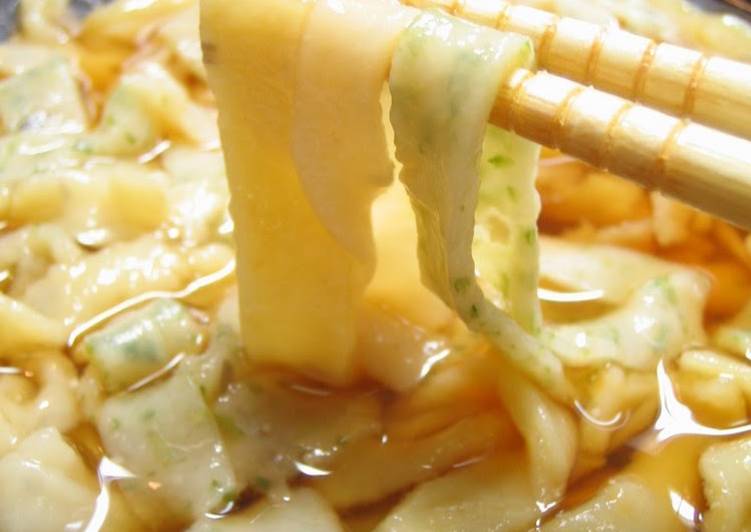
Thanks for Comming, it is John, welcome to my cooking guide site. In this special moment, I will show you a way to prepare a special dish, tri-color handmade okara udon noodles. It is one of my favorites. For mine, I am going to make it a bit unique. This is gonna smell and look delicious.
We Have Almost Everything on eBay. Dust the work surface and roll out the dough thinly. Today I introduce you to a very popular homemade Japanese dish: "Pan-Fried Udon Noodles," which is called "Yaki-Udon" in Japanese. The ingredients are cooked Udon noodles, sautéed vegetables and turkey sausage seasoned with soy sauce.
Tri-color Handmade Okara Udon Noodles is one of the most favored of recent trending foods on earth. It is appreciated by millions daily. It is simple, it is quick, it tastes yummy. Tri-color Handmade Okara Udon Noodles is something that I have loved my entire life. They are fine and they look wonderful.
To begin with this particular recipe, we have to prepare a few ingredients. You can have tri-color handmade okara udon noodles using 8 ingredients and 10 steps. Here is how you cook it.
The ingredients needed to make Tri-color Handmade Okara Udon Noodles:
- Take 20 grams x 3 Fresh okara
- Get 50 grams x 3 Plain flour
- Take 20 ml x 3 Water
- Make ready 1 tbsp Aonori
- Take 1 tbsp Grated carrot
- Make ready 1 Flour for dusting (katakuriko or plain flour)
- Make ready 80 ml Kombu based mentsuyu (3x concentrate)
- Make ready 400 ml Water
We are proud to present you Oka Ramen for those who loves Japanese food! Teuchi udon / handmade wheat noodles Udon noodles made without adding salt! Using boiling water for dough appears to be a common technique with commercially available salt-free udon. But they don't share other secrets to achieve a chewy yet sticky texture.
Instructions to make Tri-color Handmade Okara Udon Noodles:
- Combine 20 g of okara, 50 g of flour and 20 ml of water and mix well together. Use the back of a spoon to press down as you mix to avoid sticky hands.
- In another bowl combine 20 g of okara, 50 g of flour, 20 ml of water and grated carrot, and mix well.
- In another bowl combine 20 g of okara, 50 g of flour, 20 ml of water and aonori, and mix well.
- Wrap each dough in plastic wrap and rest in the refrigerator for 2 to 3 hours.
- Dust the work surface and roll out the dough thinly.
- Cut the dough into the thickness you desire.
- Bring plenty of water to a boil and cook the noodles in 2 to 3 batches (or one serving at a time) for about 10 minutes.
- Wash the boiled noodles well in cold water, and drain well.
- Make the dipping sauce by combining the mentsuyu concentrate and water in a pan and bringing it to a boil.
- Pour the mentsuyu over the cooked noodles.
Using boiling water for dough appears to be a common technique with commercially available salt-free udon. But they don't share other secrets to achieve a chewy yet sticky texture. Some people suggest using milk or tofu as a (partial) replacement for water, while others say water alone gives satisfactory results. With blond-wood sharing tables, white walls and a lively crowd, it feels friendly yet sophisticated. The handmade udon noodles produced here are top notch and accompaniments range from traditional Japanese to the less conventional (smoked mackerel with greens).
So that’s going to wrap this up for this special food tri-color handmade okara udon noodles recipe. Thanks so much for reading. I am confident that you will make this at home. There’s gonna be interesting food at home recipes coming up. Don’t forget to bookmark this page in your browser, and share it to your loved ones, colleague and friends. Thanks again for reading. Go on get cooking!

